An Illustrated History of Old Sutton in St Helens, Lancashire
Part 48 (of 95 parts) - Sutton at War Part 5 - War Diary of Harold Emblem
Part 3: Poison Gas Works | Part 4: What's Wrong With Sutton?
Researched & Written by Stephen Wainwright ©MMXX Contact Me Research Sources
Magnum Poison Gas Works | What's Wrong With Sutton?
Researched & Written by Stephen Wainwright ©MMXX
Old Sutton in St Helens
Harold Emblem War Diary
Harold's diary offers many insights into the life of a young soldier. The three and a half months of military service, documented by the Sutton lad, weren't spent continuously in trenches. His battalion was quite mobile and journeyed to many French villages and towns, all of which were perfectly spelt by Lt. Emblem in his journal. Interspersed with fighting there was training, lectures, gas courses, work parties, patrols and reconnoitring, football, shopping, church services, runs and inspections. There was also the most prized of all, time off to relax. As Harold wrote in one diary entry: "Rest. Lucky dog."
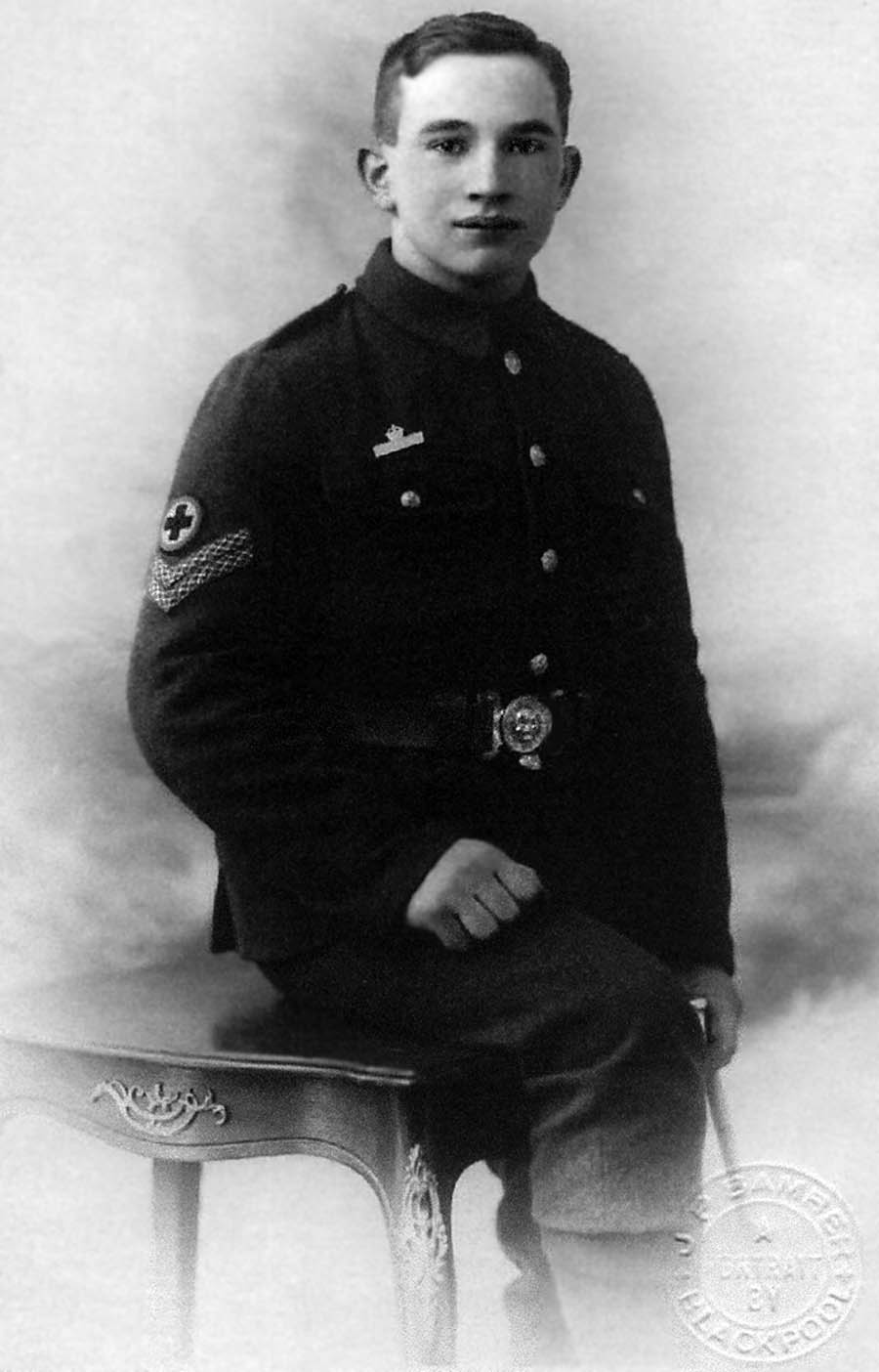
A portrait of Harold Emblem when a medic in the 8th battalion of the Nottinghamshire & Derbyshire Regiment

A portrait of Harold Emblem from Sutton, when serving as a medic in the 8th battalion of the Nottinghamshire and Derbyshire Regiment

A portrait of soldier Harold Emblem
Harold’s surviving diary begins on January 1st 1918 when the 20-years-old was enjoying home leave. On that New Year’s day he was in Blackpool and he wrote in his diary "Good time. Started well", a reference to the year. Harold clearly enjoyed the theatre and on January 2nd attended a performance at Blackpool’s Grand Theatre.
Then on the Saturday he visited Liverpool Playhouse. “Good" he commented in his diary. On the following Monday, his last full day of leave, Harold visited the Hippodrome in St.Helens. By Friday he was back with his unit in Calais after recording a "rough night" on the trip. On Monday 14th at 3am, Harold reached Arras and over the next week visited various French villages. Some football was played and fitness runs were undertaken. After one on January 21st, Harold wrote "Awful run, nearly dead".
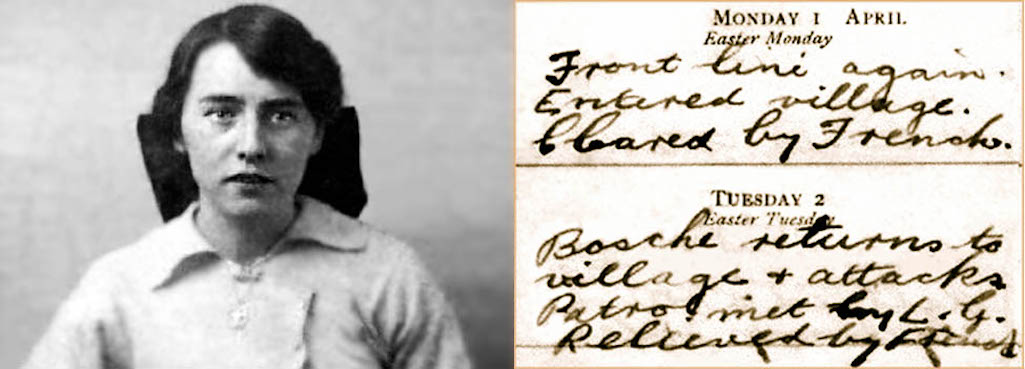
Left: Annie Mason Emblem, mother of Harold Emblem MC; Right: Easter 1918 extracts from his diary

Annie Mason Emblem, mother of Harold and diary extracts from Easter 1918
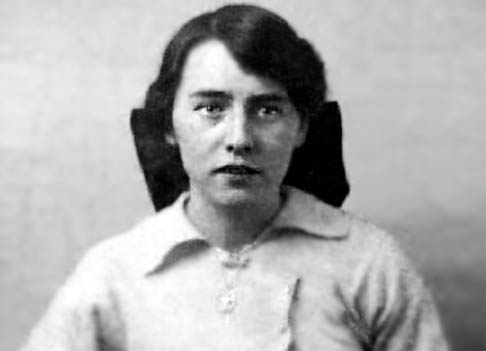
Harold’s mother Annie Mason Emblem
The Sherwood Foresters were quite mobile throughout Harold’s final months of service. From Steenvoorde they moved three miles south to the small village of Eecke, where on Sunday 10th February, a church service was held in a marquee. They then moved onto Wieltje where Harold bedded down in a tin hut at the so-called California Camp. Initially his duties were reconnoitring but then on Ash Wednesday 13th, Harold was in the thick of it. His diary entry reads "Shelled by gas & field guns".
On the following day, Harold’s troops entered the front line at night, although it was very quiet. This was probably through the weather as Harold wrote he was "rotten wet". Friday was "Fairly qt" although there were gas shells and some sniping to contend with. Saturday 16th was not a good day as Harold was hit by shrapnel in his left shoulder. He notes the injury in a factual way but makes no further reference to it in his diary. On Sunday 17th, the first day of Lent, the battalion moved onto Kronprinz Farm at Passchendale. That day was recorded as quiet, as was much of the rest of the week. On Thursday 21st, Harold wrote "shelled but quiet", a contradiction in terms but no doubt a relative comment.
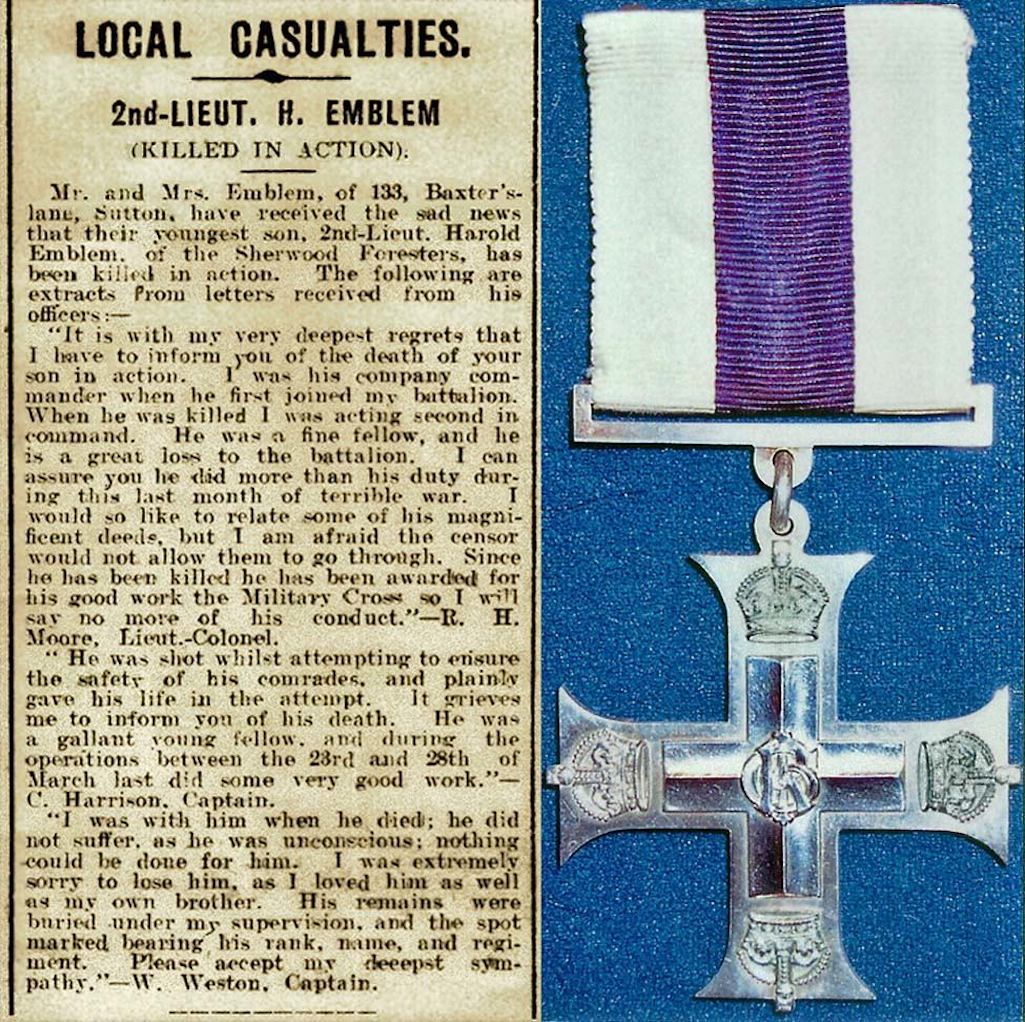
Report on the death of Lieutenant Harold Emblem in 1918 and his Military Cross

Report on the death of Lieutenant Harold Emblem and his Military Cross

Report on the death of Lt. Harold Emblem and his Military Cross
The following day was noteworthy as British Expeditionary Force commander Field Marshal Douglas Haig held a battalion inspection. On Sunday March 10th, Harold left his battalion for Steenvoorde to undertake a week's training. A gas course took place later that day and on the Monday and Tuesday he had lectures and drill. More gas training was undertaken on Thursday and Friday. On Saturday 16th after completing his courses, Harold returned to his battalion, now at St. Omer, and on Sunday he attended a church parade. The following week was devoted mainly to battalion training and on Friday 22nd at 2am, they entrained at St. Omer for the village of Nesle. On Palm Sunday March 24th, Harold wrote that they'd marched to their transport under fire.
There was much fighting over the next week around the district of Vermandovillers and in a fluid situation, the battalion repeatedly repositioned itself. Harold made reference in his diary to a series of dug-ins, withdrawals and counter-attacks. This was the period of the German Spring offensive of 1918 and the Allied 5th Army was being driven back over the former Somme battlefields by overwhelming enemy numbers. Saturday 30th March was Easter Saturday and Harold wrote that they'd "Retired fighting towards Caix. Rallied & returned afterwards ordered by Brigadier to Moreuil."
The battalion entered Moreuil on Easter Monday, April 1st, after the French had cleared the village of the German "Bosche". However, their withdrawal was temporary as Tuesday’s diary entry reveals: "Bosche returns to village & attacks". Relieved by the French, the Sherwood Foresters then marched to the small town of Hangest-sur-Somme for some much-needed respite.
On Friday 5th April, the battalion arrived in the village of Abbeville. On the following day reinforcements arrived and there was another troop inspection by Field Marshall Haig. On Sunday Harold was the Orderly Officer, the officer of the day. It seems to have gone well as he wrote "Everything A1". On Monday 8th, Lt. Emblem prepared for a battalion parade which took place on the 9th. Harold wrote "Inspected & congratulated by Div. Commr." For much of the week they trained in the village of Hangest, before moving onto Querrieux via Amiens on the 12th. Harold added "Air raid – wind vert." to his diary entry.
Saturday involved reconnoitring and on Sunday 14th, Harold attended a church service at Querrieux. "Very tame day" Harold noted in his diary. He wasn’t to know that that would be the last church service he would ever attend. Monday was devoted to "Continuous training" with "Nothing of importance" happening on the Tuesday. There were more troop movements over the next two days which ended at the Front Line near Villers-Breton on Friday 19th, where the Sherwood Foresters relieved other troops.
Saturday 20th March was another "fairly quiet day" although they experienced "gas into village" and Harold remarked that he was on patrol duty that night. On Sunday, Harold's unit patrolled to the front where they "met gas at Bosche line." He wrote in his diary that it was a "rum job". On Monday 22nd, Harold's penultimate day, he wrote how he'd pushed his platoon forward 100 yards, adding that it had been a "rough passage". Tuesday April 23rd 1918 was St. George’s Day and it was the day that 20-years-old Harold was slain. His last poignant written words prior to being shot were "Sniping! Hope for relief."
Harold Emblem was posthumously awarded the Military Cross for his bravery. His citation, published in the London Gazette of July 26th 1918, explained what had happened on his last day:
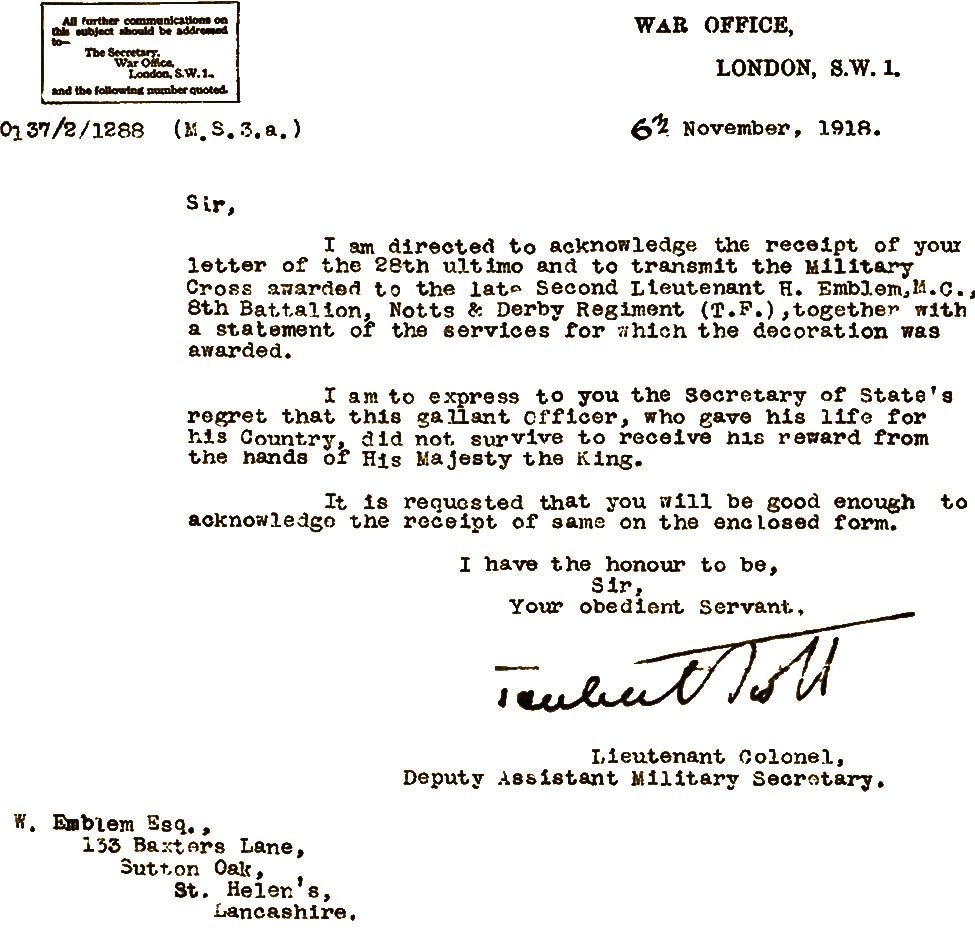
One of several letters from the War Office received by William and Annie Emblem about their late hero son Harold

War Office letter received by William and Annie Emblem about their hero son

Letter sent to William & Annie Emblem



